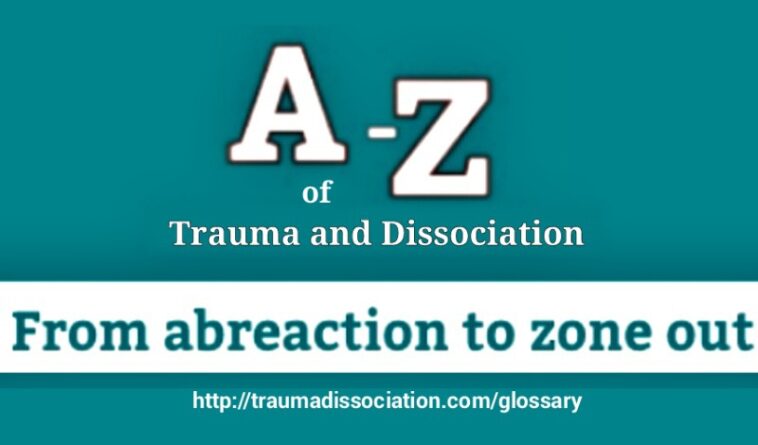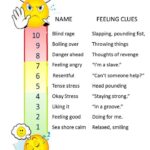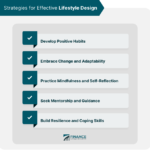Grasp the art of resilience against Mother Nature’s wrath. Illuminate your path to Surviving a Natural Disaster with practical advice and far-reaching techniques.
Table of Contents
Introduction to natural disasters
A natural disaster refers to a sudden and severe event that is caused by natural forces and results in widespread destruction, loss of life, and damage to infrastructure. These catastrophic events can include earthquakes, hurricanes, floods, wildfires, and tsunamis. Natural disasters can have devastating effects on communities and individuals, as they often lead to the displacement of people, the destruction of homes and livelihoods, and the disruption of essential services. Coping with the aftermath of a natural disaster requires resilience, preparedness, and the implementation of effective coping strategies.
Importance of coping strategies
In the aftermath of a natural disaster, coping strategies play a crucial role in helping individuals navigate through the challenges and difficulties they may face. These strategies serve as a lifeline, providing people with the necessary tools and support to regain control and resilience. By implementing effective coping strategies, individuals can better manage their emotions, reduce anxiety, and improve their overall mental well-being. Furthermore, coping strategies foster a sense of community and solidarity, as survivors come together to share their experiences and support one another. Ultimately, the importance of coping strategies cannot be overstated, as they serve as a powerful resource in promoting healing and recovery in the face of adversity.
Overview of the article
In this article, we will explore different coping strategies that can help individuals not only survive but also thrive in the face of a natural disaster. Natural disasters can be devastating, leaving people feeling overwhelmed and helpless. However, with the right mindset and preparation, it is possible to overcome the challenges and emerge stronger. This article will provide an overview of the key coping strategies that can empower individuals to navigate through difficult times, including staying informed, having a survival plan, seeking support, practicing self-care, and maintaining a positive mindset. By implementing these strategies, individuals can increase their resilience and adaptability, enabling them to effectively cope with the stress and uncertainty that natural disasters bring.
Preparing for a Natural Disaster

Creating an emergency plan
Creating an emergency plan is crucial when it comes to surviving a natural disaster. Having a well-thought-out plan in place can be the difference between life and death. When creating an emergency plan, it is important to consider various factors such as the type of disaster, the location, and the resources available. This plan should include steps on how to evacuate safely, communication strategies with loved ones, and a designated meeting point. Additionally, it is essential to regularly review and update the emergency plan to ensure it remains relevant and effective. By creating a thorough emergency plan, individuals and families can increase their preparedness and resilience in the face of natural disasters.
Building an emergency kit
Building an emergency kit is an essential step in preparing for a natural disaster. A well-stocked emergency kit can provide you and your family with the necessary supplies to survive and cope with the aftermath of a disaster. It should include basic items such as non-perishable food, water, first aid supplies, flashlights, blankets, and a battery-powered radio. Additionally, it is important to regularly check and update your emergency kit to ensure that all items are in good condition and within their expiration dates. Having an emergency kit readily available can increase your chances of staying safe and resilient during a natural disaster.
Securing your home
Securing your home is essential in order to minimize the damage caused by natural disasters. One important step is to reinforce the structural integrity of your house by conducting regular inspections and maintenance. This includes inspecting the roof, walls, windows, and doors for any cracks or weaknesses that could be vulnerable during a disaster. Additionally, it is crucial to secure loose objects and furniture inside your house that could become projectiles during high winds. By taking these proactive measures, you can significantly increase the safety of your home and protect your belongings in the event of a natural disaster.
Staying Safe During a Natural Disaster

Finding shelter
Finding shelter is a crucial aspect of surviving a natural disaster. When faced with a sudden and dangerous event, such as a hurricane or earthquake, seeking shelter becomes a top priority. It is essential to find a sturdy structure or a designated safe area that can provide protection against the elements and potential hazards. This could be a well-built building, a basement, or an emergency shelter. Finding shelter not only ensures physical safety but also offers a sense of security and stability amidst the chaos. Additionally, it allows individuals to regroup and gather their thoughts, enabling them to make informed decisions about their next course of action. In times of distress, having a designated shelter can greatly enhance one’s chances of survival and provide much-needed relief during a natural disaster.
Following evacuation orders
Following evacuation orders is crucial when facing a natural disaster. Authorities issue evacuation orders to ensure the safety and well-being of the affected individuals. It is important to heed these orders and evacuate to designated shelters or safer locations. By following evacuation orders, individuals can avoid potential dangers and minimize the risk of harm.
Evacuation orders are based on expert analysis and assessments of the situation, considering factors such as the severity of the disaster, proximity to danger zones, and the potential for additional hazards. It is essential to stay informed about evacuation orders through reliable sources such as local authorities, emergency management agencies, and news updates. By staying updated and promptly complying with evacuation orders, individuals can increase their chances of survival and improve the overall resilience of their communities in the face of a natural disaster.
Protecting yourself from hazards
Protecting yourself from hazards during a natural disaster is crucial for your safety and well-being. Several strategies can help minimize the risks and increase your chances of survival. First, it is important to stay informed about the potential hazards in your area and be aware of any early warning systems or evacuation plans. Second, create an emergency kit with essential supplies such as food, water, medication, and basic tools.
Additionally, reinforce your home to make it more resilient to potential hazards, such as installing storm shutters or reinforcing the foundation. It is also recommended to develop a communication plan with your family or household members to ensure everyone knows how to contact each other in case of separation. Finally, it is essential to practice drills and educate yourself on the appropriate actions to take during different types of disasters. By implementing these strategies, you can significantly increase your chances of protecting yourself from hazards during a natural disaster.
Managing Stress and Anxiety
Recognizing signs of stress
Recognizing signs of stress is crucial during a natural disaster. When individuals are faced with a traumatic event, they may experience a range of emotional and physical reactions. Some common signs of stress include feelings of anxiety and fear, difficulty sleeping, changes in appetite, and physical symptoms such as headaches or stomachaches. Paying attention to these signs and seeking support when needed is important. By recognizing and acknowledging the signs of stress, individuals can take steps to manage their emotions and cope effectively with the challenges posed by natural disaster.
Practicing relaxation techniques
Practicing relaxation techniques is essential in coping with the aftermath of a natural disaster. When faced with the overwhelming stress, anxiety, and trauma that often accompany such events, finding ways to calm the mind and relax the body can promote emotional well-being and aid recovery. Techniques such as deep breathing exercises, meditation, and yoga can help alleviate tension and promote a sense of inner peace. Additionally, engaging in activities that bring joy and comfort, such as listening to soothing music or spending time in nature, can provide a much-needed respite from the chaos and uncertainty. By incorporating relaxation techniques into their coping strategies, survivors of natural disasters can find solace and strength as they navigate the challenges ahead.
Seeking support from others
Seeking support from others is crucial to surviving a natural disaster. In times of crisis, connecting with family, friends, and even strangers can provide much-needed emotional support and practical help. By sharing experiences and resources, individuals can find comfort and reassurance and gain valuable insights and knowledge on how to cope with the aftermath of a disaster. Whether it is through online communities, local support groups, or reaching out to emergency services, seeking support from others can greatly contribute to one’s resilience and recovery in the face of adversity.
Meeting Basic Needs

Finding food and water
During a natural disaster, finding food and water can be a significant challenge. With disrupted supply chains and depleted resources, it is essential to have strategies in place to ensure survival. One of the first steps is to assess the available resources in your immediate surroundings. Look for water sources such as rivers, lakes, or even rainwater. Purification methods like boiling or using water purification tablets can help make the water safe to consume. When it comes to food, try to ration your existing supplies and prioritize non-perishable items. Consider foraging for edible plants or insects if necessary. Additionally, connecting with local relief organizations or government agencies can provide access to food and water distribution points. Remember, staying hydrated and nourished is crucial for your overall well-being during a natural disaster.
Ensuring access to medical care
Ensuring access to medical care is crucial during a natural disaster. In such challenging times, people may experience injuries, illnesses, or require urgent medical attention. Therefore, it is essential to establish medical facilities and set up temporary clinics to provide immediate healthcare services to those affected. Additionally, ensuring a sufficient supply of medical equipment, medications, and trained medical personnel is vital to effectively address the medical needs of the survivors. By prioritizing access to medical care, we can minimize the risks associated with health complications and ensure the well-being of individuals impacted by natural disasters.
Maintaining personal hygiene
Maintaining personal hygiene is crucial during a natural disaster to prevent the spread of diseases and infections. Despite limited resources and challenging conditions, it is important to prioritize basic hygiene practices. This includes regularly washing hands with soap and clean water, using sanitizers when water is unavailable, and practicing proper oral hygiene. Ensuring that food and drinking water are safe and properly handled can also contribute to maintaining personal hygiene and overall health. By taking these measures, individuals can minimize the risk of illness and stay healthy even amid a natural disaster.
Recovering and Rebuilding

Assessing damage and making a plan
After a natural disaster, assessing the damage and planning for recovery is crucial. This initial step helps determine the damage’s extent and prioritise the actions required for rebuilding and restoration. Assessing the damage involves inspecting the property, taking note of any structural issues, and identifying potential hazards. Once the assessment is complete, a comprehensive plan can be formulated, outlining the necessary steps. This includes coordinating with local authorities, contacting insurance providers, and seeking assistance from relief organizations. By assessing the damage and making a plan, individuals and communities can navigate the challenges of a natural disaster and begin the recovery process.
Seeking financial assistance
Seeking financial assistance after a natural disaster can be crucial to rebuilding one’s life. When a natural disaster strikes, individuals and communities often face significant financial challenges, such as property damage, loss of income, and unexpected expenses. This is where seeking financial assistance becomes crucial. Various resources available, including government aid programs, non-profit organizations, and community initiatives, provide financial support to those affected by natural disasters. Individuals can access the necessary resources to recover and rebuild by seeking financial assistance, ensuring their long-term resilience and stability.
Reconnecting with community
Reconnecting with the community is essential to coping with a natural disaster’s aftermath. After experiencing the trauma and devastation, survivors must find support and solace from their community. Whether participating in local support groups, attending community events, or volunteering in recovery efforts, reconnecting with others can provide a sense of belonging and restore hope. Additionally, being surrounded by individuals who have gone through similar experiences can offer a unique understanding and empathy that is invaluable during the healing process. By coming together as a community, survivors can share their stories, offer emotional support, and work towards rebuilding their lives together.
Surviving a Natural Disaster – Next Steps
After experiencing a natural disaster, it is crucial to take immediate action to ensure your well-being and begin the process of recovery. Here are some essential next steps to consider. First, prioritize your safety and your loved ones by assessing potential hazards. Secure your immediate environment and seek medical attention if necessary. Secondly, contact local authorities and relief organizations for assistance and information on available resources. They can guide emergency shelters, food, water, and other essential supplies. Additionally, taking care of your mental health during this challenging time is important. Consider visiting https://negativestress.com, a valuable online resource that offers coping strategies and support for managing stress and anxiety caused by natural disasters. Remember, taking these next steps is crucial for your recovery and rebuilding.




